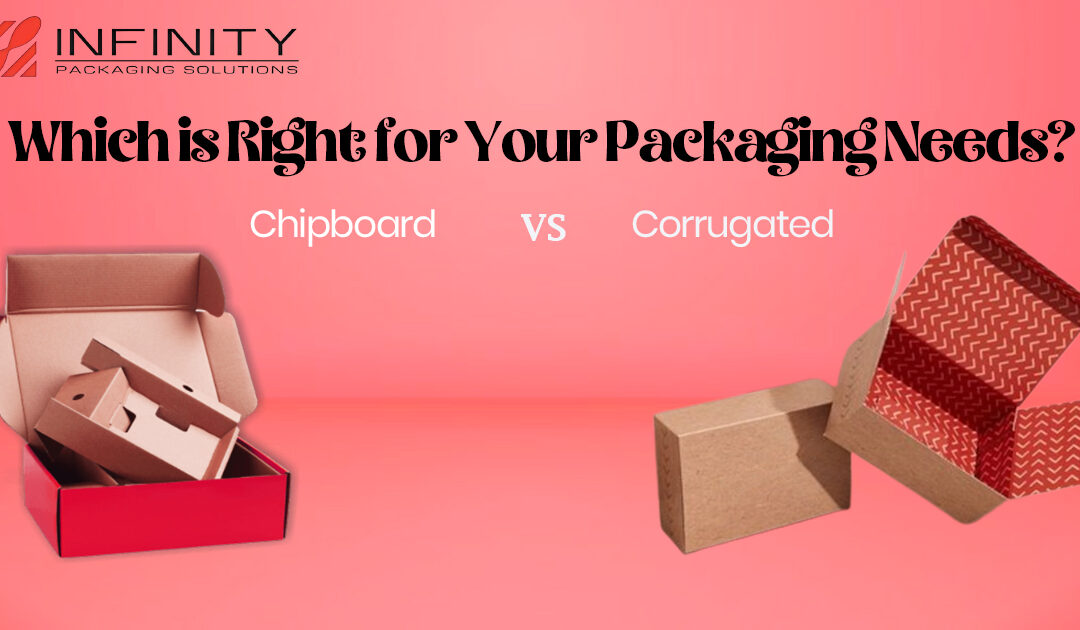When it comes to packaging your products, choosing the right material can make a world of difference. Two popular options that often stand out are chipboard and corrugated packaging. Let’s take a closer look at both to help you decide which is best suited for your packaging needs.
Chipboard: Simple Yet Versatile
What is Chipboard?
Chipboard, also known as paperboard or cardboard, is a sturdy material made from pressed paper fibers. It comes in various thicknesses, offering versatility for different packaging requirements.
Advantages of Chipboard
Versatility: Chipboard is adaptable. It’s available in different grades and can be used for various packaging types, from folding cartons for retail products to rigid boxes for delicate items.
Customization: It’s easy to customize chipboard packaging. You can add branding, logos, and unique designs, making it stand out on the shelves and leaving a lasting impression on customers.
Protection: Chipboard provides good protection against external factors like light impact and moisture, safeguarding your products during transit.
Eco-Friendly: It’s made from recycled materials and is itself recyclable, contributing to eco-friendly packaging practices.
Applications of Chipboard
Retail Products: Chipboard is commonly used for packaging items like cosmetics, food products, and electronics in retail settings.
Custom Boxes: Its versatility makes the chipboard ideal for creating custom boxes that perfectly fit your product’s dimensions.
Corrugated: Strength and Durability
What is Corrugated Cardboard?
Corrugated cardboard is composed of three layers: an inside liner, an outside liner, and a fluted or wavy layer between them. This construction gives it strength and durability.
Advantages of Corrugated
Strength: Corrugated packaging is known for its strength. The fluted layer provides cushioning and protection against impacts, making it suitable for shipping fragile items.
Customizable: Like chipboard, corrugated cardboard can be customized with printing, branding, and various finishes.
Versatility: Corrugated boxes come in various strengths, making them suitable for a wide range of products, from lightweight goods to heavy-duty items.
Applications of Corrugated
Shipping and Logistics: Corrugated boxes are widely used in shipping due to their durability and ability to protect items during transit.
Bulk Packaging: They are ideal for packaging larger or heavier items like appliances and furniture.
Choosing Between Chipboard and Corrugated
Considerations for Your Products
Nature of the Product: If your product is delicate or requires extra protection during shipping, corrugated packaging might be the better choice due to its cushioning properties.
Size and Weight: For smaller and lighter products, chipboard can provide ample protection while offering customization options. For larger or heavier items, corrugated packaging’s strength might be more suitable.
Aesthetic Appeal: If branding and aesthetics are crucial, both chipboard and corrugated can be customized. However, chipboard might offer more flexibility in terms of intricate designs and finishes.
Environmental Impact
Both chipboard and corrugated cardboard are eco-friendly options. However, chipboard is typically made from recycled materials and is more easily recyclable due to its single-layer composition, making it a slightly more environmentally friendly choice.
The Final Verdict: Which One Fits Your Needs?
For Retail and Custom Packaging: If your focus is on customization, aesthetics, and catering to retail needs, chipboard might be the ideal choice. Its versatility in design and suitability for smaller, lighter products make it a great option.
For Shipping and Protection: If your priority is safeguarding items during transit, especially for heavier or fragile goods, corrugated packaging would be the better choice. Its strength and cushioning properties offer superior protection.
In essence, the choice between chipboard and corrugated packaging depends on your specific product, its transportation needs, and your branding preferences. Both materials offer unique benefits, so consider the nature of your product and the purpose of the packaging to make an informed decision that best serves your needs.



